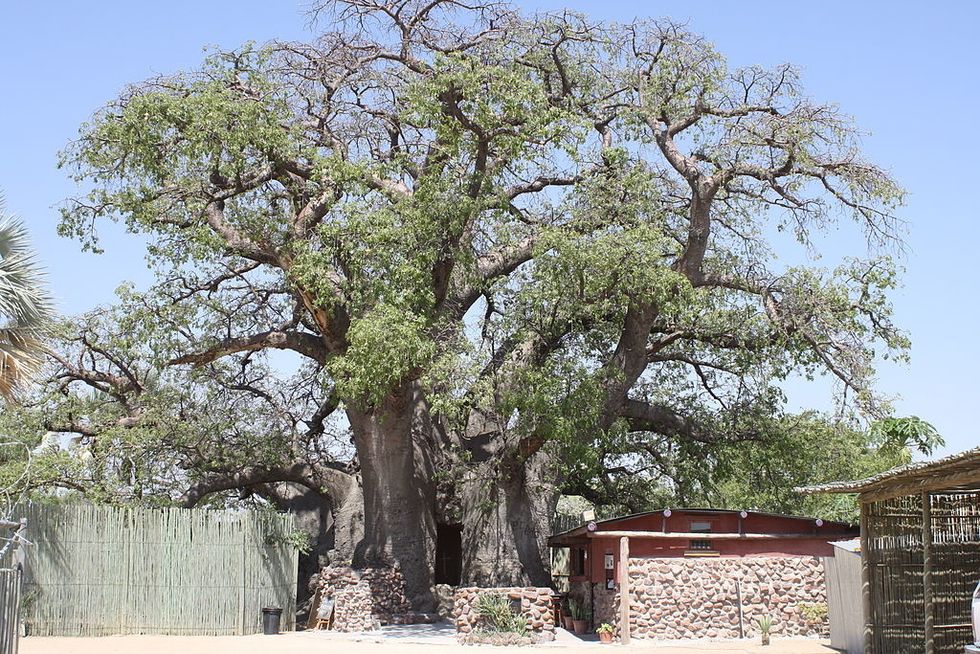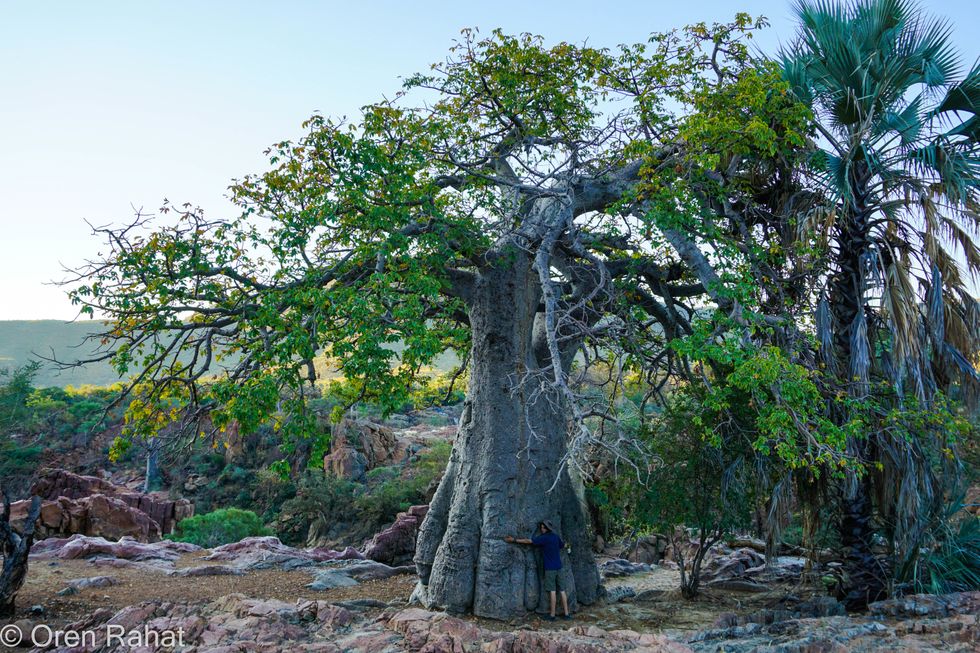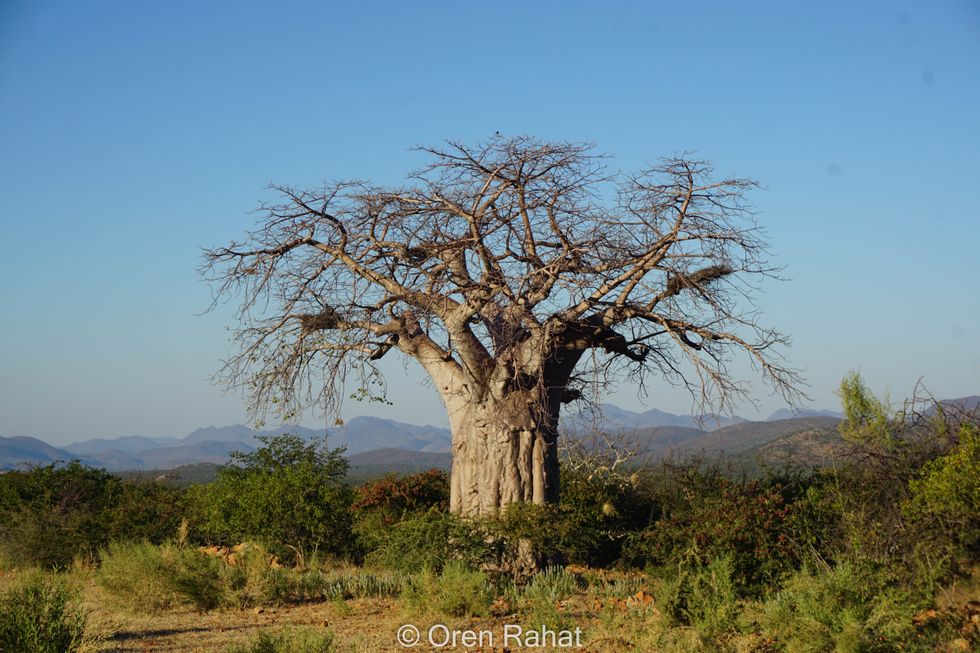If you've ever read Antoine de Saint-Exupéry's The Little Prince, you may recall the baobab tree is portrayed as a villain. The narrator of the legendary novel describes the baobabs as
"terrible seeds on the planet that was the home of the little prince… The soil of that planet was infested with them. A baobab is something you will never, never be able to get rid of if you attend to it too late. It spreads over the entire planet. It bores clear through it with its roots. And if the planet is too small, and the baobabs are too many, they split it in pieces..."
The narrator follows with a stern warning:
"Children… watch out for the baobabs!"

Ever since I read the book and watched the movie as a little kid, the baobab held a special place in my heart. And, fortunately, I got to see this awesome tree with my own two eyes this summer.
I spent the first six weeks of summer break camping in Namibia (through the University of Arizona's Study Abroad program "Desert Ecology and Conservation Biology", led by Dr. Hans-Werner Herrmann), a beautiful and exceptional country located in Southwest Africa. Out of the eight species of baobabs found on our humble Earth, six can be found in Madagascar, and in Namibia, the specie Adansonia digitata is found primarily in the north.
Known as the 'upside-down tree', the baobab is the inspiration behind several myths and stories. Here is one of my favorites:
The first baobab grew next to a small lake. Taller and taller it grew until it started noticing the other trees. Some were tall and slender, some had brightly colored flowers and other others had large leaves. Then one day it saw a reflection of itself in the lake which shocked it to its root hairs: There in the mirror of the lake it saw a huge fat trunk covered in bark that looked like the wrinkled hide of an old elephant; small, tiny leaves and pale, creamy flowers.
Very upset, the baobab complained bitterly to the Creator. 'Why did you make me so ugly?' it wanted to know. 'Why couldn't you make me elegant like the palm tree with its straight and slender trunk? Why did you have to make me so big and fat? Look at the masses of bright and beautiful flowers of the flame tree! What about me? Why couldn't you give me flowers like that?'
On and on the baobab went, wailing and bemoaning the bad deal it had been given. And when it spotted the fruit on the fig trees, its indignation knew no bounds.
God was becoming more and more exasperated with the wailing and complaining of the baobab until eventually, determined to silence the baobab forever, he came down, yanked it out of the earth and replanted it upside down.
From that day on the baobab could no longer see its reflection or complain. Since then, it has been working in silence, paying off its ancient transgression by being the most useful and helpful tree around.
Across the African continent, the baobab has served as a jail, chapel, post office, and hiding place. The tree trunk of the baobab pictured below has a door going into it and can accommodate up to 35 people!

The baobab, which can live for thousands of years, bears fruit rich in Vitamin C, very high in antioxidants, potassium, and dietary fiber, and calcium levels surpassing that of milk and spinach.
You can actually get your very own set of baobab products – superfruit powder, gummy chews, and 100% baobab oil, full of vitamins, minerals, and Omega fatty acids promoting superior health and wellness while supporting a sustainable practices and a prosperous life for Senegalese farmers!
All hail the African Tree of Life!!!
References:
Avis, Riana. "Baobab Myths and Stories." The Baobab Way, 2 June 2015, thebaobabway.com/baobab-myths-and-stories/.
"Baobab." Sir Tim Smit KBE, Executive Chairman, Eden Regeneration Ltd and Co-Founder of the Eden Project, www.edenproject.com/learn/for-everyone/plant-profi....
"Ombalantu Baobab Tree." Wikipedia, Wikimedia Foundation, 24 July 2018, en.wikipedia.org/wiki/Ombalantu_baobab_tree.
Powbab. "Powbab | Natural Superfood Products Powered by Baobab." Powbab, www.powbab.com/.
Saint-Exupery, A.DE. The Little Prince. Wordsworth Editions LTD, 1943.






 Energetic dance performance under the spotlight.
Energetic dance performance under the spotlight. Taylor Swift in a purple coat, captivating the crowd on stage.
Taylor Swift in a purple coat, captivating the crowd on stage. Taylor Swift shines on stage in a sparkling outfit and boots.
Taylor Swift shines on stage in a sparkling outfit and boots. Taylor Swift and Phoebe Bridgers sharing a joyful duet on stage.
Taylor Swift and Phoebe Bridgers sharing a joyful duet on stage.













